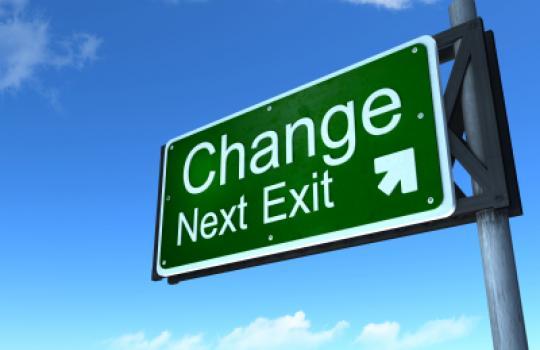Organisations seeking a blueprint to address the increasing pressures and demands of the rapidly changing corporate landscape are often confronted with change models that are too academic, too static or overly simplistic for their needs. A structured yet flexible model is essential and to work effectively requires outstanding leadership behaviours at all times, to proactively manage and deliver the necessary organisational change.
Whilst the ‘Dynamics of Change’ model is the pick of the bunch in providing organisations with a robust, integrated and pragmatic approach to understanding the dynamics of the change process, to work effectively it requires exemplary leadership skills and effective communication strategies to support and proactively drive organisational change. The responsiveness at its core triumphs over the linear format of change proposed by other templates, which ignore the fact that organisational change is an overtly iterative and emergent process, which requires flexible responses to contingent circumstances. After all, as the axiom dictates, change is a constant.
The clear, easy to understand framework provided by the Dynamics of Change model fits into a wide range of organisational contexts. By locking together all aspects of change, from corporate vision statements through to the devolved implementation of business processes, this model depicts managing organisational change as a cyclical process guided by a series of core principles. To succeed however, congruence through every business level at every change process is needed, alongside appropriate interventions to define and secure commitment to the required change.
The Five Dynamics of Change
D1 – Direct
Providing the context and foundation for the process, this dynamic captures the business’ aspirational vision, mission and values statements to ensure that the overall direction and purpose is carefully considered and clearly articulated. The company’s strategic objectives are also laid out at this stage, taking into account the company’s customers, competitors, products and markets. Setting the course from the present situation to how the business would optimally operate in future; D1 is fundamentally important to both the enterprise and the success of the entire change process.
D2 – Describe
Turning visions of the future business operation into functional plans and enabling strategies, this dynamic ensures congruence and alignment of behaviours and business processes. In this stage, people management is a key issue, as the functional plans and approaches each business area must adopt and to articulate in terms of their contribution to the business strategy. The required level of consistency is achieved by collective adherence to the overall vision and direction which are then facilitated by the enabling strategies.
D3 – Define
The importance of this third dynamic shouldn’t be overlooked, but sadly often is by organisations placing the kudos of playing a strategic role before the implementation of operational necessities. Clear and unambiguous descriptive enables the practical application of strategies developed in D1 and D2, allowing everyone in the business to follow the optimal process towards success.
D4 – Deliver
Ensuring that processes and procedures are implemented in a manner congruent with the overall vision and values, this dynamic concerns the actual delivery of the previously defined business strategies. Leadership and management behaviours come into focus at this stage, as leaders must consistently demonstrate the desired behaviours to maintain support from the workforce experiencing the change process. On an operational level, measurement and evaluation of the delegated accountabilities is also vital to ensure that the set tasks are being achieved.
D5 – Develop
While ongoing review and monitoring of progress remain a business essential, this dynamic sits above these processes, coming into operation when one or two conditions apply: either that strategy and objectives have been achieved and new direction is required or more commonly that contingent circumstances change so significantly that direction or strategy must be reviewed. If upon evaluation this strategic repositioning or change to operational focus is required, then the process flow begins again by returning to the first dynamic.
Working thoroughly through each dynamic is crucial to successful management of the change process; however, as discussed previously, exemplary leadership behaviour is also required to translate the business’ strategic visions into operational reality. In today’s world, the drive for change in business is moving faster than ever, with fierce competition, market globalisation and rapid technological advancements factors making change management a necessary core competence at every business level. If leaders don’t possess these skills already, then to survive as a leader of tomorrow, they must develop these skills as a matter of urgency.










